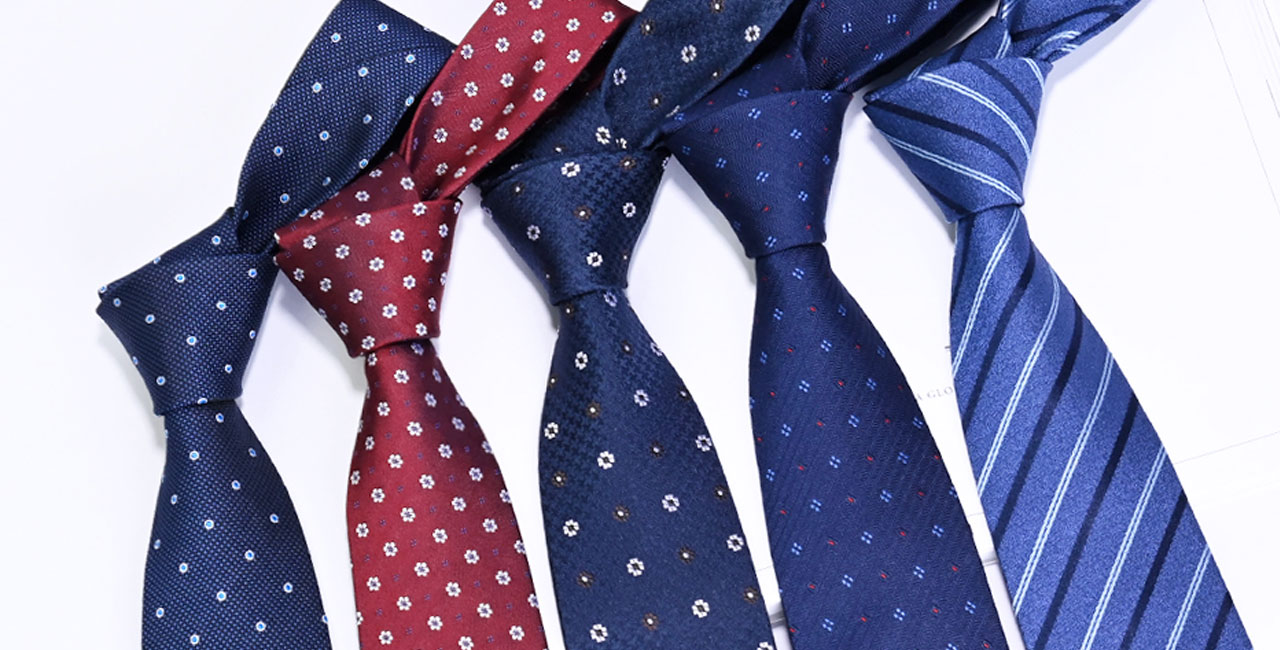
The Art of Tie Buying: How to Judge the Quality of Your Next Necktie
The Importance of a Tie in a Man's Wardrobe
A tie is not just a piece of fabric that hangs from a man's neck; it’s a symbol of power, sophistication, and elegance. A well-tailored suit paired with the right tie can transform an ordinary man into a dashing gentleman.
It’s the one accessory that sets men apart from each other and can make or break an outfit. A good quality tie speaks volumes about a man’s style and attention to detail.
The Need to Judge the Quality of a Tie Before Purchasing It
Investing in a good quality tie is crucial because it's not just about how it looks but also how long it lasts. Nobody wants to be caught in an important meeting with their tie falling apart, looking cheap or wrinkled.
Judging the quality of a tie before purchasing it is critical for ensuring longevity and value for money. It's no secret that there are many "cheap" ties available on the market, claiming to be "high-quality." However, these ties often fall apart within months or even weeks of wearing them.
So why waste your money on something that won't last? Investing in durable, high-quality ties may seem like an expensive choice upfront, but they’re worth every penny in terms of both appearance and longevity.
At the same time, understand that price doesn't always equate to quality - just because something is expensive doesn't mean it’s high-quality. That being said, be wary of deals too good to be true because more often than not; they are!
- take your time when purchasing ties; don’t rush into buying any old thing just because you need one for an event or meeting. Take your time and select wisely; your wardrobe will thank you for it!
Material Matters
Silk: The King of Tie Materials?
Silk is the most common material used to make ties and is generally considered the highest quality. Silk provides an elegant look, a nice shine, and drapes beautifully.
However, not all silk ties are created equal and some may be made with lower quality silk or not enough silk at all. It is important to look for a tie that is made with 100% pure silk in order to ensure its durability.
Wool: A Durable Choice
Wool ties are becoming more popular due to their durability and textural qualities. A wool tie can add texture to an outfit while also providing warmth during colder months. However, wool can be rougher on the skin than silk or cotton and may not provide the same level of elegance as a pure silk tie.
Cotton: Cool Comfort
Cotton ties offer a more casual look compared to their silk counterparts, but they do provide cool comfort during warmer months. Cotton ties also tend to be less expensive while maintaining their durability. However, cotton may wrinkle easily and may not retain its shape after multiple wears.
Polyester: The Cheap Material
Polyester should be avoided when it comes to purchasing ties as it is very cheaply made and shows on the quality of the product. While some manufacturers might blend polyester in with other materials such as silk or cotton in order to reduce costs, this ultimately compromises on quality and durability.
When it comes down to it, material matters when it comes down to choosing a high-quality tie. While some materials may seem cheaper initially they will most likely compromise on overall quality after multiple wears; whereas high-quality materials such as pure silk will always drape well, maintain its shape over time and continue looking good for years of use without compromise on quality.
Weave and Texture
The Feel Factor
When it comes to ties, texture is everything. The weave of a tie can make or break its appearance, longevity, and overall quality.
A poorly woven tie is like a cheap imitation of the real thing; it looks okay from afar but falls apart when you get too close. If you want to judge the quality of a tie, start by feeling its texture.
Does it feel smooth and soft against your skin? Or does it feel rough and scratchy?
The Wrinkle Factor
Another thing to consider when judging the quality of a tie is how well-woven it is. A well-woven tie will have fewer wrinkles than one that has been poorly crafted.
Why does this matter? Well, wrinkles make your tie look sloppy and unkempt.
Nobody wants to look like they rolled out of bed and threw on the first thing they found in their closet! Plus, a wrinkled tie can be hard to iron out - and who has time for that?
The Durability Factor
We come to durability - arguably the most important factor when it comes to judging the quality of a tie's weave. A well-woven tie will last longer than one that has been poorly crafted because its threads are tightly interwoven.
This means that the fabric won't fray or tear as easily as a lesser-quality tie would. Plus, since there are fewer gaps between threads in a well-woven tie, there's less chance of snags or pulls ruining its appearance.
If you want to judge the quality of a tie's weave and texture, focus on how it feels against your skin (smooth or scratchy), whether or not it wrinkles easily (a sign of poor craftsmanship), and how durable its weave seems (threads tightly interwoven). A high-quality tie will feel soft, be virtually wrinkle-free, and last for years to come.
Stitching Details: The Importance of Quality Craftsmanship
When it comes to judging the quality of a tie, one of the most important factors to consider is the stitching details. Quality craftsmanship is essential in ensuring that a tie will last for years to come, and shoddy stitching can be an indicator that the tie won't hold up over time. Good stitching should be tight and even, with no loose threads or missed stitches.
Look closely at the seams on both sides of the tie to see if they are neat and uniform. If there are any signs of sloppiness or inconsistency, it's a red flag that the tie may not have been crafted with care.
Another thing to look for is how well the lining has been stitched in place. A well-made tie will have a lining that is secured firmly around all edges, preventing it from shifting or bunching up over time.
In contrast, a poorly stitched lining can cause a tie to lose its shape or even fall apart after only a few wears. It's worth taking some extra time when shopping for ties to check out each one carefully before making a purchase.
Pay attention to stitching details like these as they can reveal valuable insights about craftsmanship and durability. After all, investing in quality ties that will last you years is always better than constantly replacing cheaply made ones because they fall apart too quickly!
Lining: The Unseen Hero
When it comes to ties, the lining is often overlooked. However, it is a crucial component that affects both the drape and weight of a tie. Without a proper lining, a tie will not hang properly and feel uncomfortable to wear.
The Impact of Lining on Drape
The lining of a tie acts as a skeleton, providing structure and shape to the fabric. A well-lined tie will have a smooth and even drape, while an unlined or poorly lined one will have unsightly wrinkles or bulges. This can ruin the overall look of an outfit and give off an unprofessional impression.
The Impact of Lining on Weight
The weight of your tie can be just as important as its appearance. A cheaply lined tie may feel heavy or bulky around your neck, causing discomfort throughout the day. On the other hand, high-quality linings can add just enough heft to give your tie a luxurious feel while still remaining comfortable.
So pay attention to the lining – it's what makes your tie truly shine! A quality lining ensures that your tie lays correctly while wearing it without causing irritation from being too heavy on the neck.
Brand Reputation
Talk about how brand reputation can indicate quality
When it comes to buying a tie, the reputation of the brand matters. It's not just about buying a piece of clothing; you're investing in your wardrobe and image.
The best brands have reputations to uphold, and that means they're likely to use high-quality materials and employ experienced craftspeople to ensure their products meet the highest standards. These brands understand that their name is on the line with every tie they produce, so they don't cut corners when it comes to quality.
Insinuate that well-known brands are often associated with high-quality products
It's no secret that some brands have risen above the rest in terms of quality. When you think of luxury fashion houses like Gucci or Chanel, for instance, you immediately associate them with high-end products made from premium materials.
Similarly, when it comes to ties, there are certain brands that have earned a reputation for producing exceptional products. These include names like Brooks Brothers, Ralph Lauren and Hermes - all known for creating ties with impeccable craftsmanship and timeless style.
When you purchase a tie from one of these respected brands, you can be confident that you're getting a product that has undergone rigorous quality control measures at every stage of production - from sourcing the finest fabrics to stitching each part together by hand. While there's no one-size-fits-all answer when it comes to finding the perfect tie - as everyone has unique preferences in terms of color, pattern and style - keeping these factors in mind will help ensure you end up with a product that not only looks great but also lasts long enough for you get your money's worth out of it!
Price Point
Let's talk about the elephant in the room: price. It's no secret that the cost of a tie can vary greatly, and many people assume that a higher price means better quality.
But is this always true? Not necessarily.
Address how price point can be an indicator of quality
Price can certainly be an indicator of quality, but it's not the only factor to consider. A higher price may indicate that the tie is made with high-quality materials and crafted with care. However, it could also mean that you're paying for a brand name or designer label rather than actual quality.
On the other hand, a lower-priced tie doesn't automatically mean it's low-quality either. Sometimes you'll find great deals on well-made ties that just happen to be on sale or from lesser-known brands.
Insinuate that sometimes paying more is...
So what do I insinuate? Well, sometimes paying more is worth it. If you have your heart set on a particular designer or fabric and you know it will be perfect for your needs, then by all means go for it - even if it means shelling out some extra cash.
However, if you're just buying a tie because you feel like you need one and don't really care about brand names or fancy materials, then there's no need to spend more than you have to. Keep an eye out for sales or check out lesser-known brands - you might just find something great at a bargain price.
Conclusion
When judging the quality of a tie there are several factors to consider including material type, weave and texture, stitching details and lining as well as brand reputation and price point. While some people may prioritize certain factors over others based on their own preferences or needs; ultimately what makes one tie "good" may not work for another person.
Whether you're looking for a classic silk tie or something more trendy, take the time to do your research and figure out what factors are most important to you. Remember that there's no one-size-fits-all answer when it comes to tie shopping, but keeping these tips in mind can help steer you in the right direction.
Post time: Jun-09-2023



















